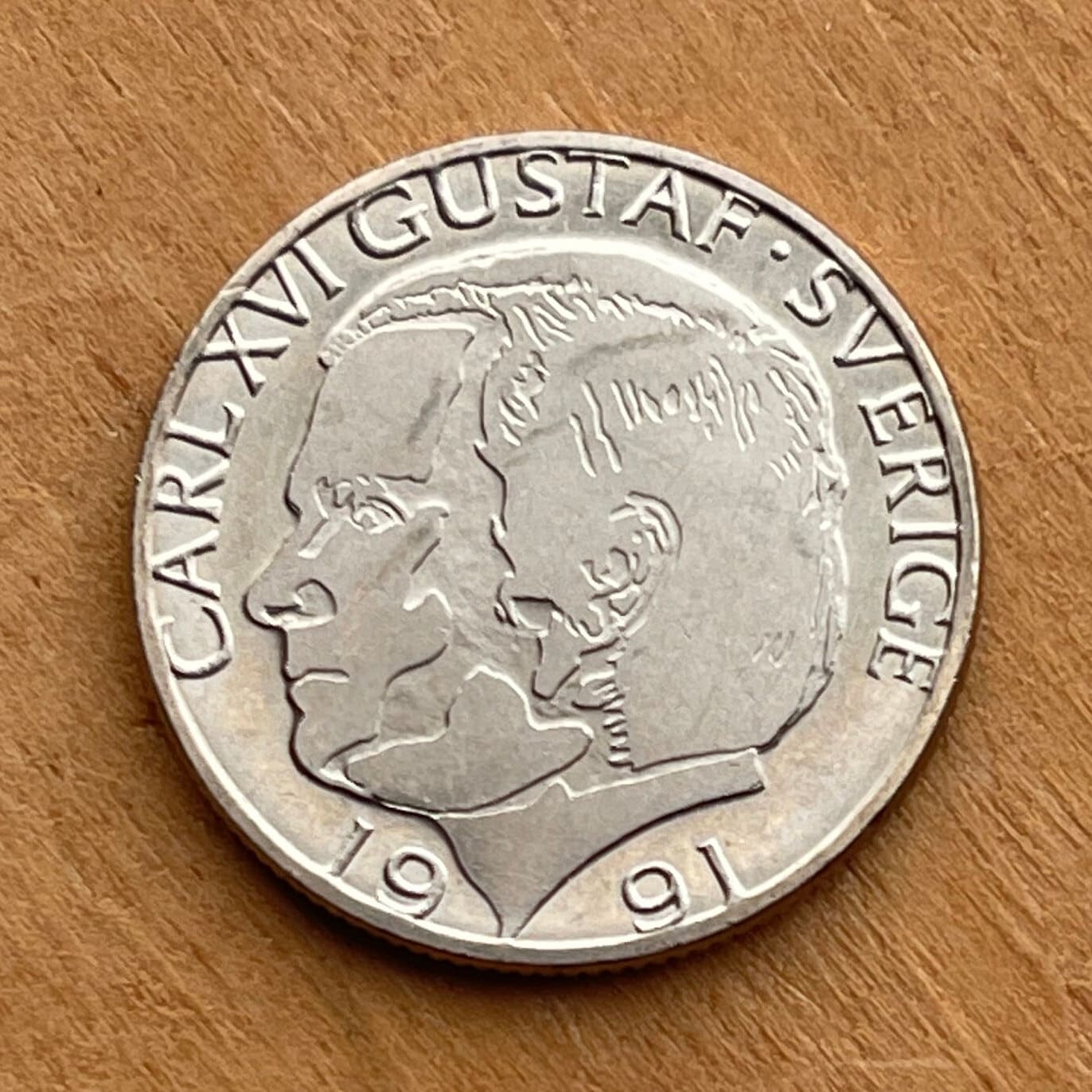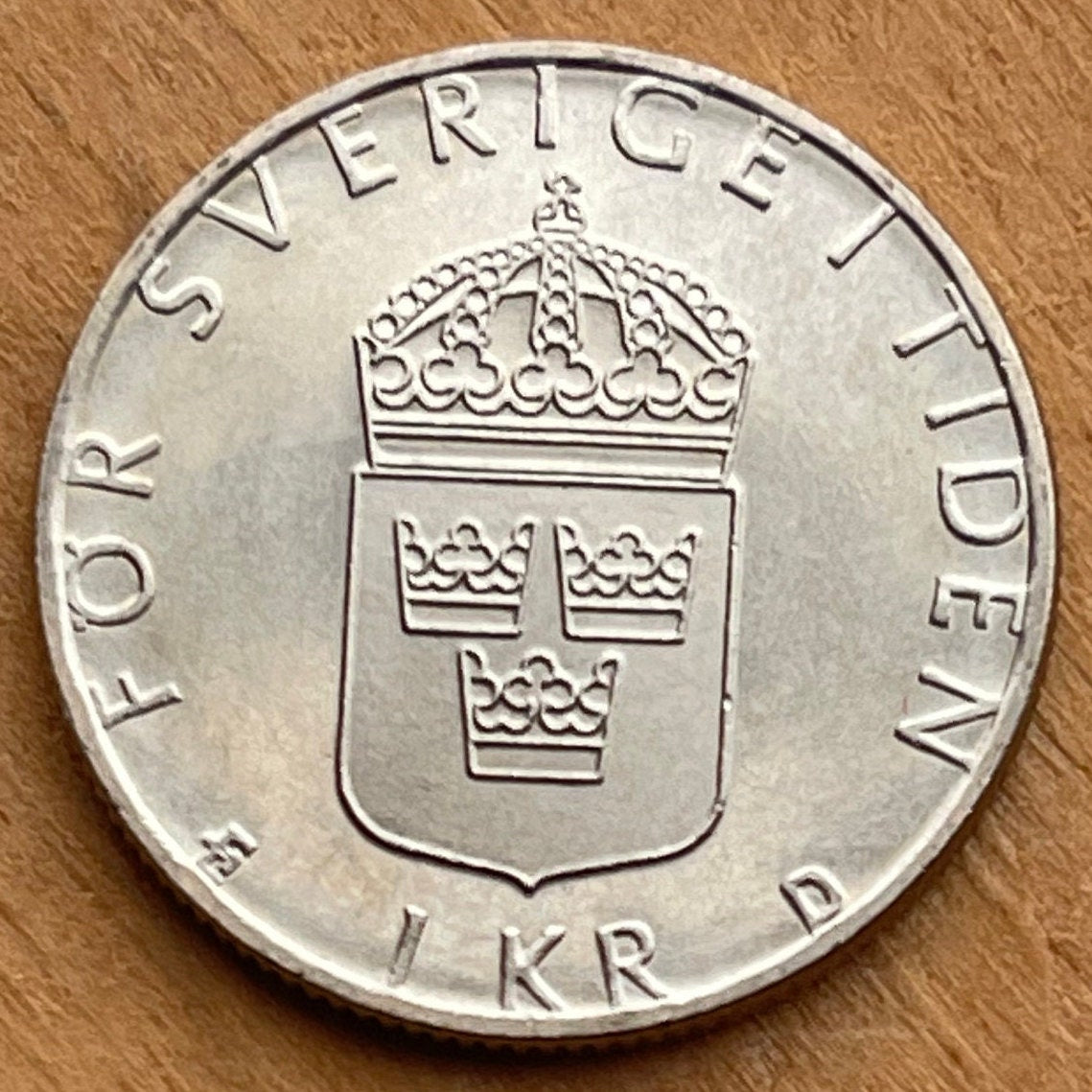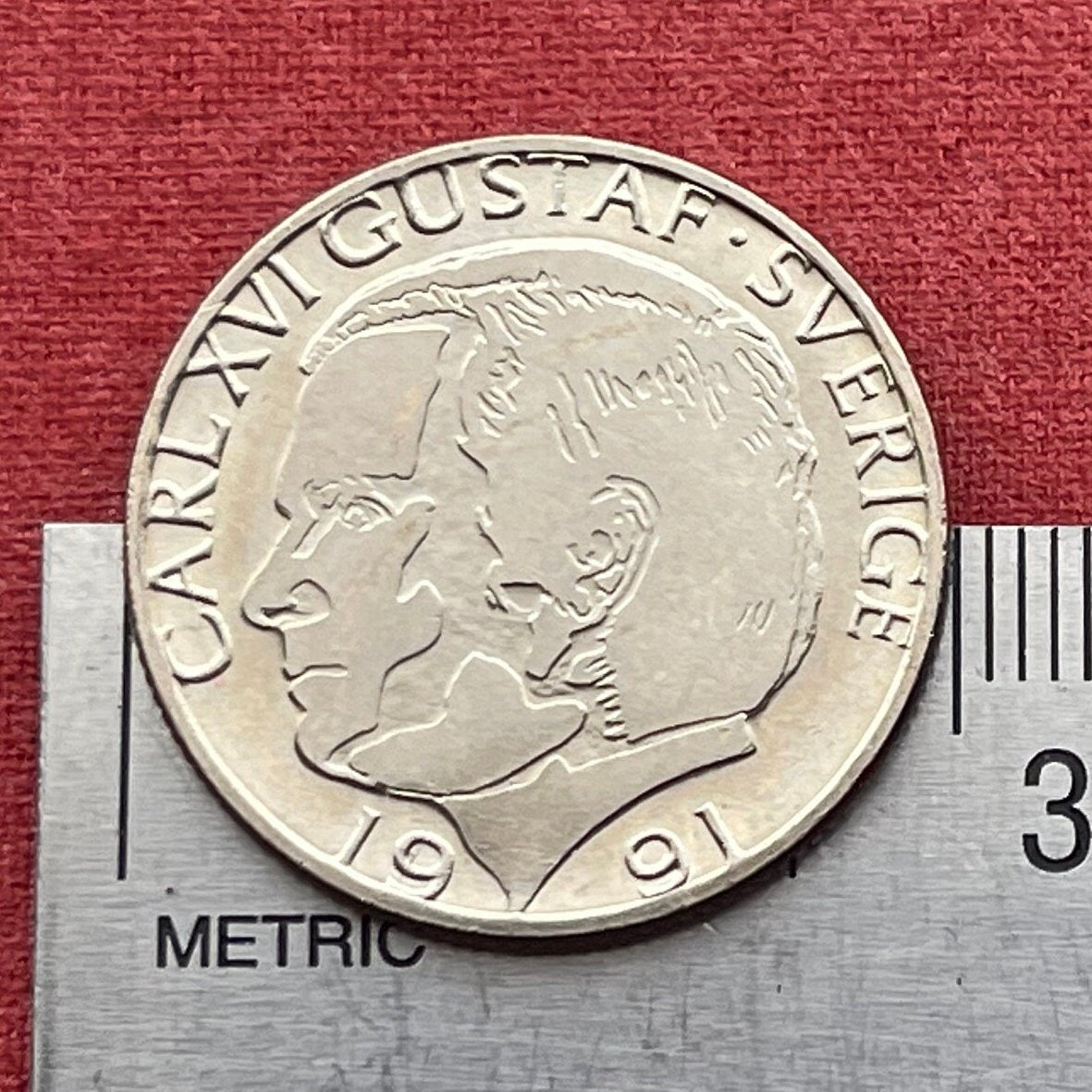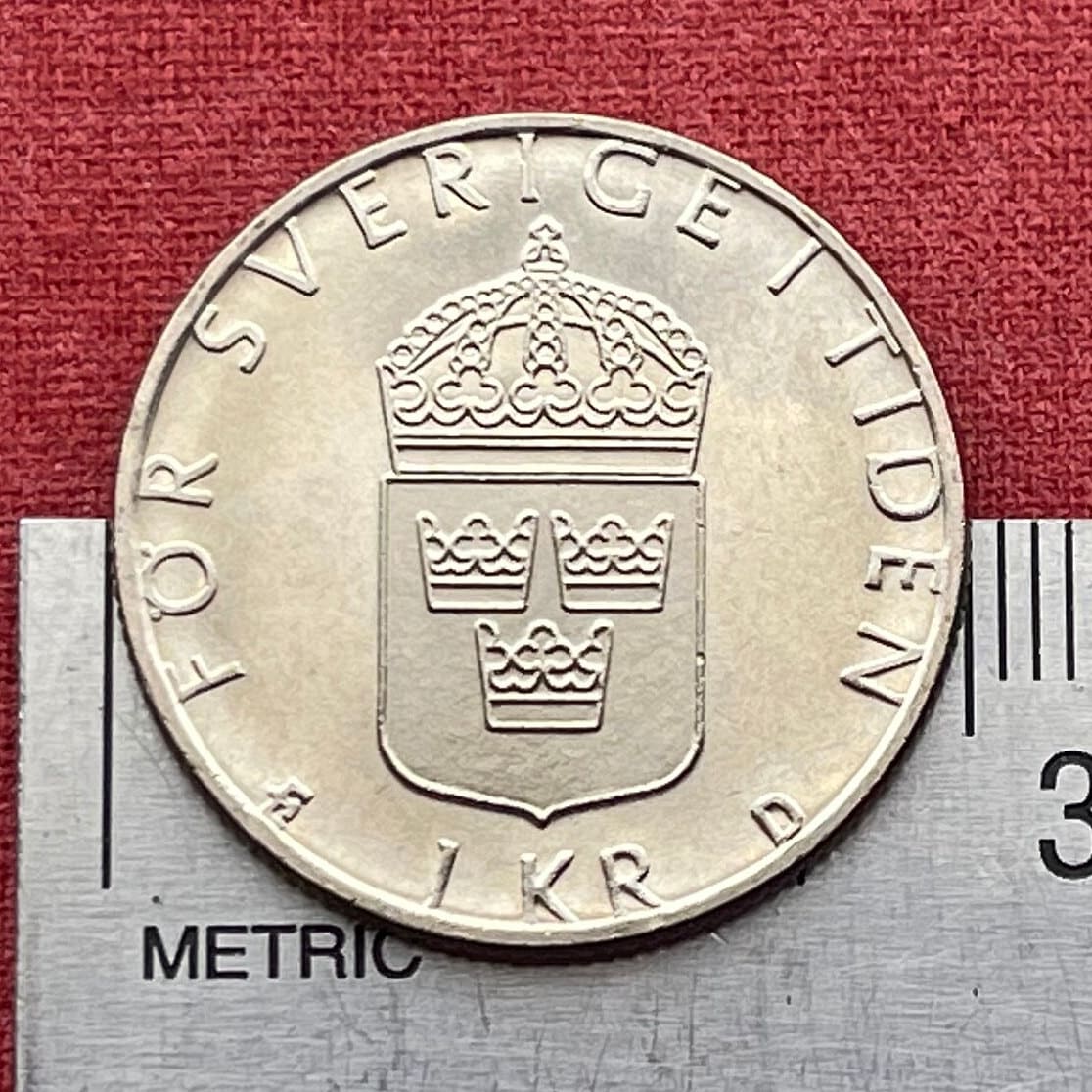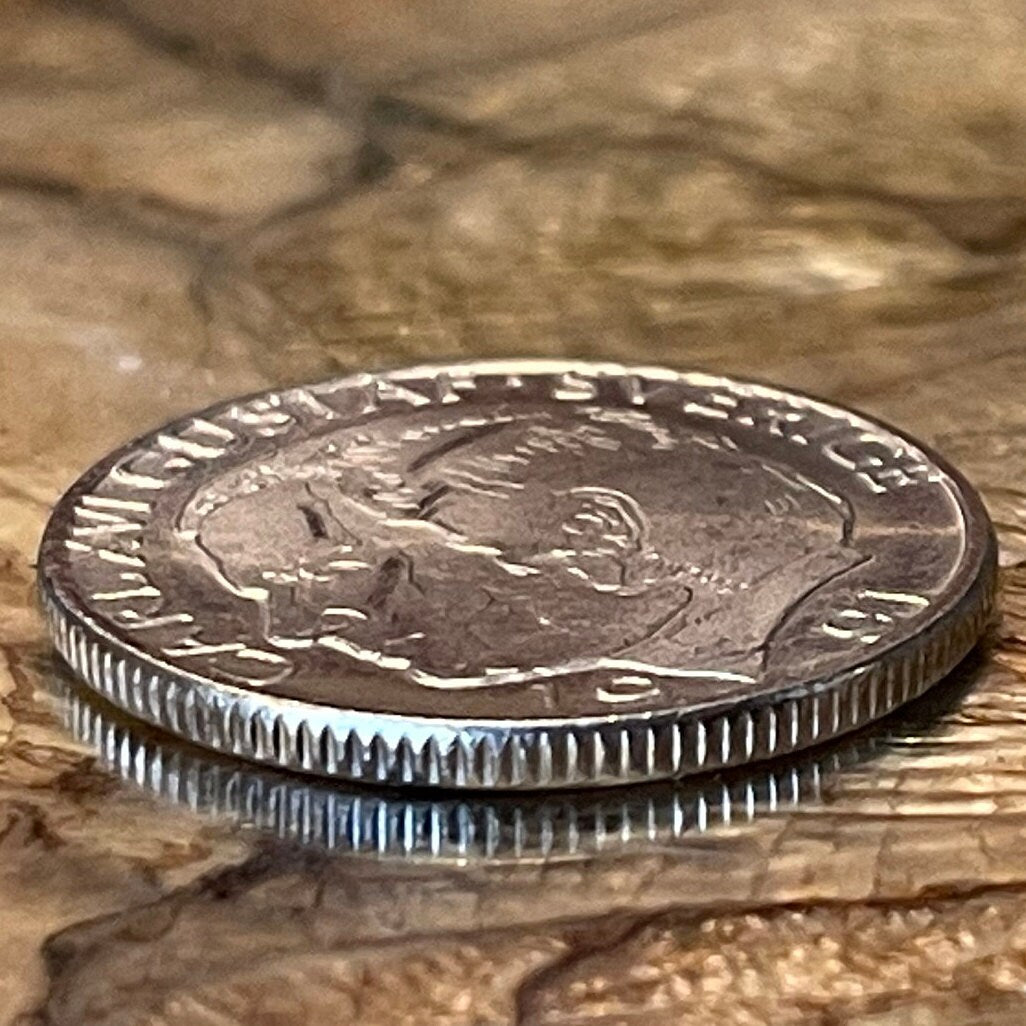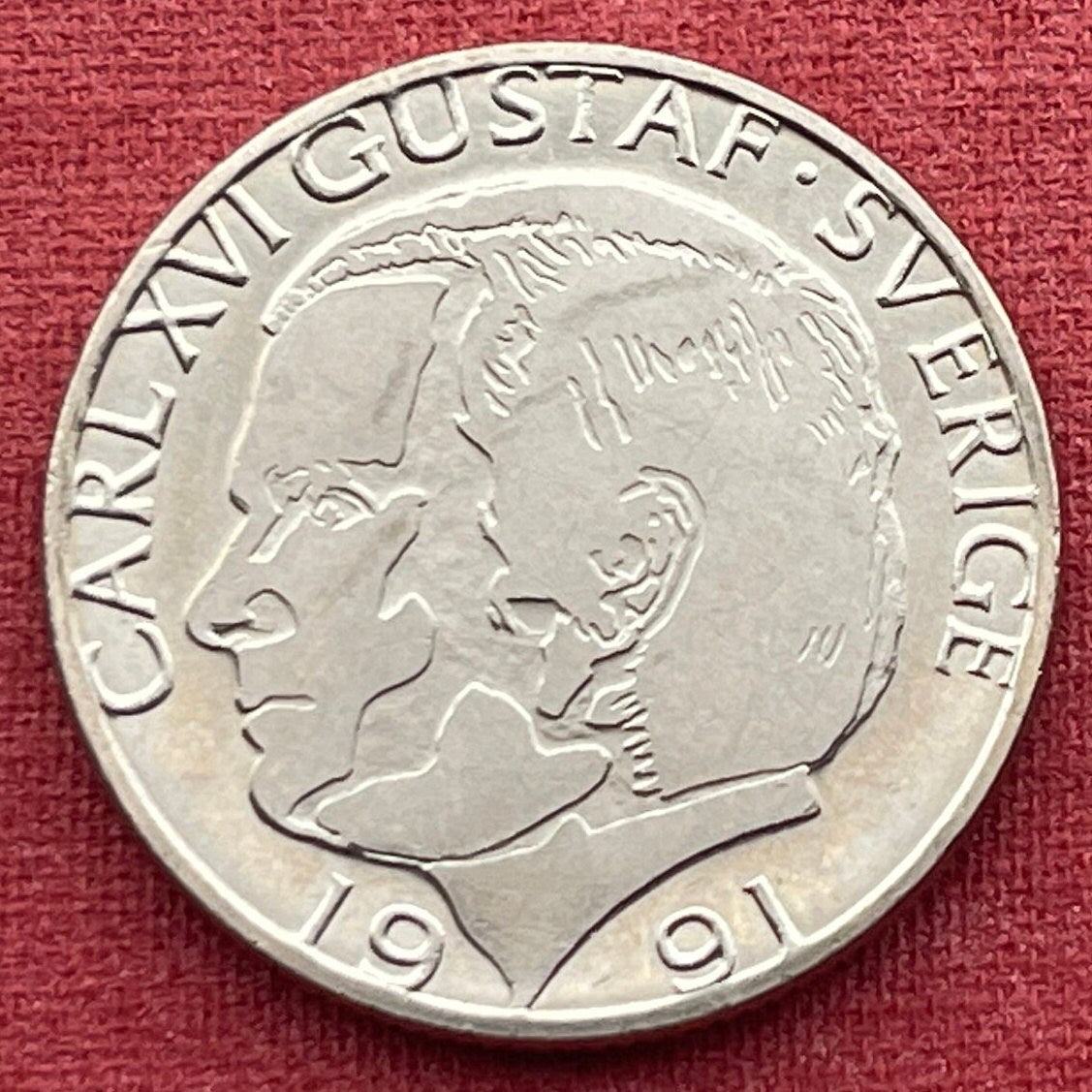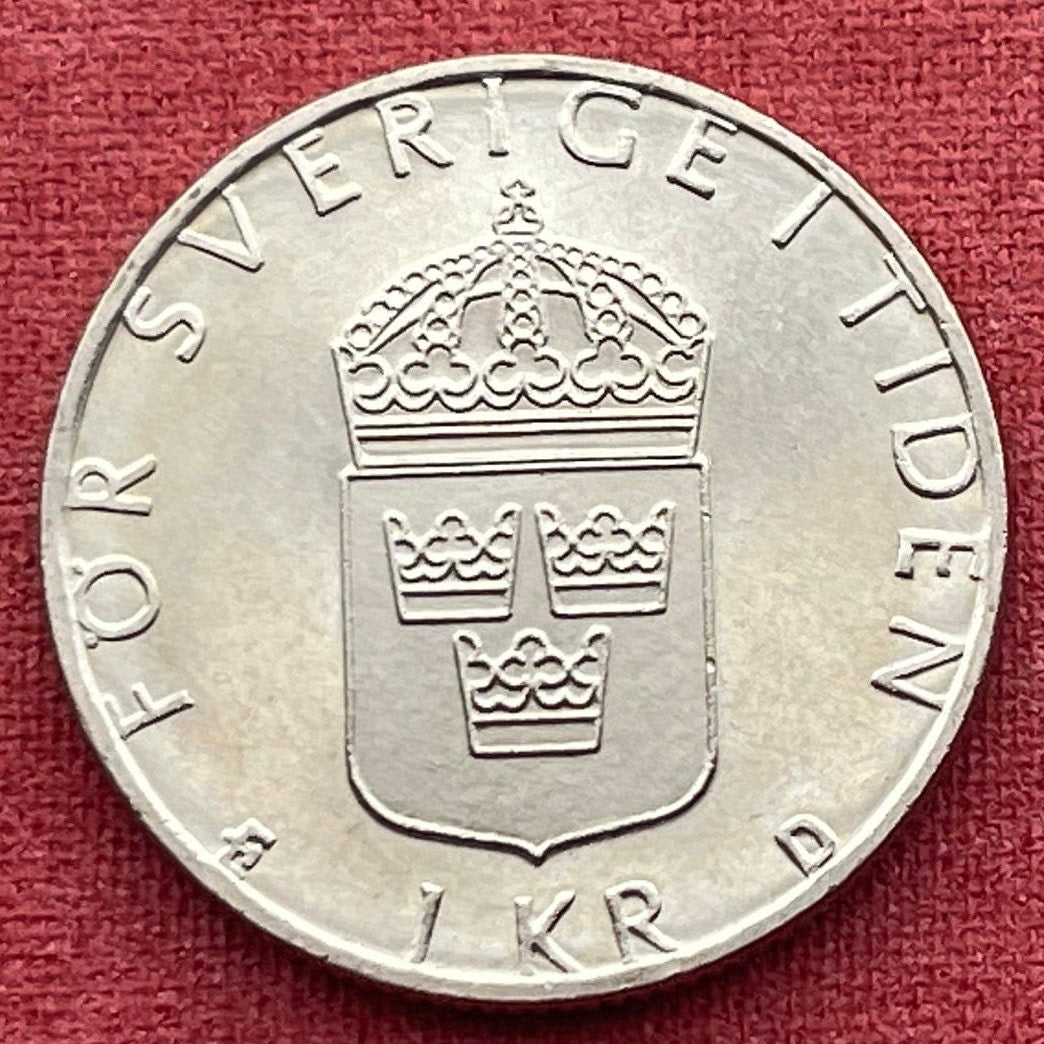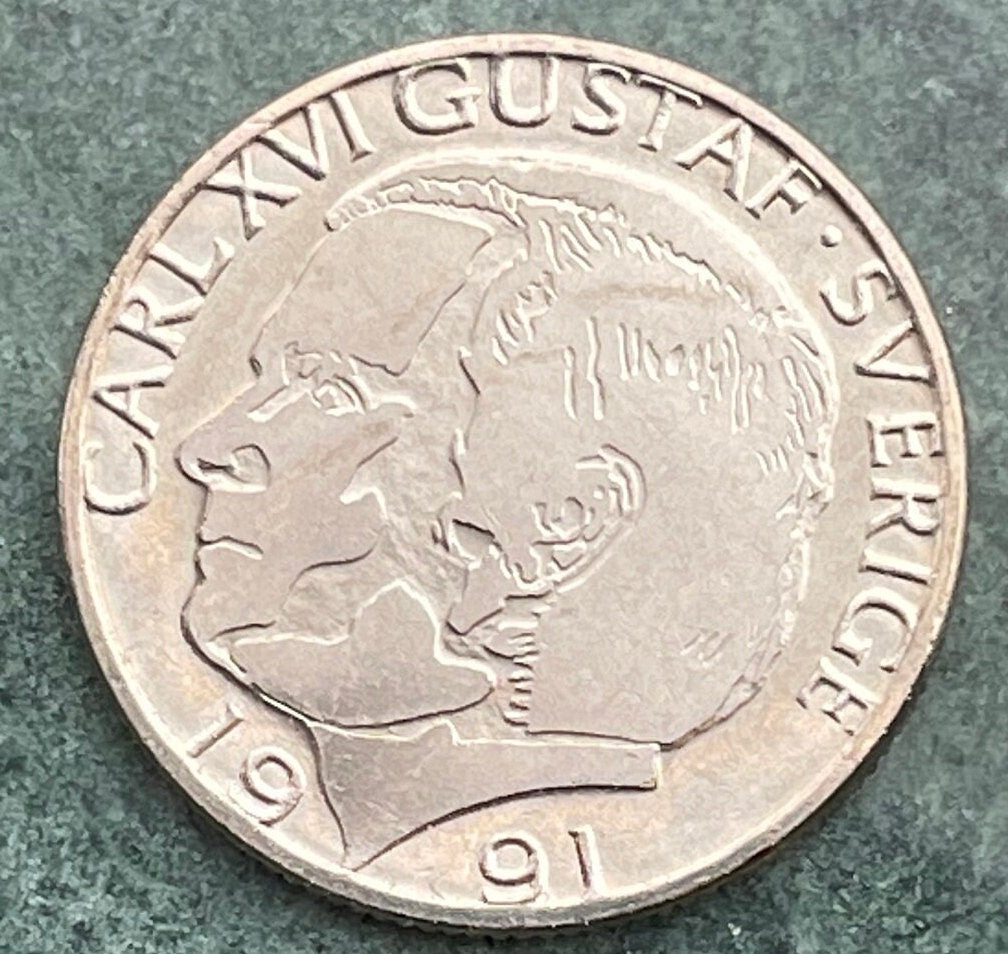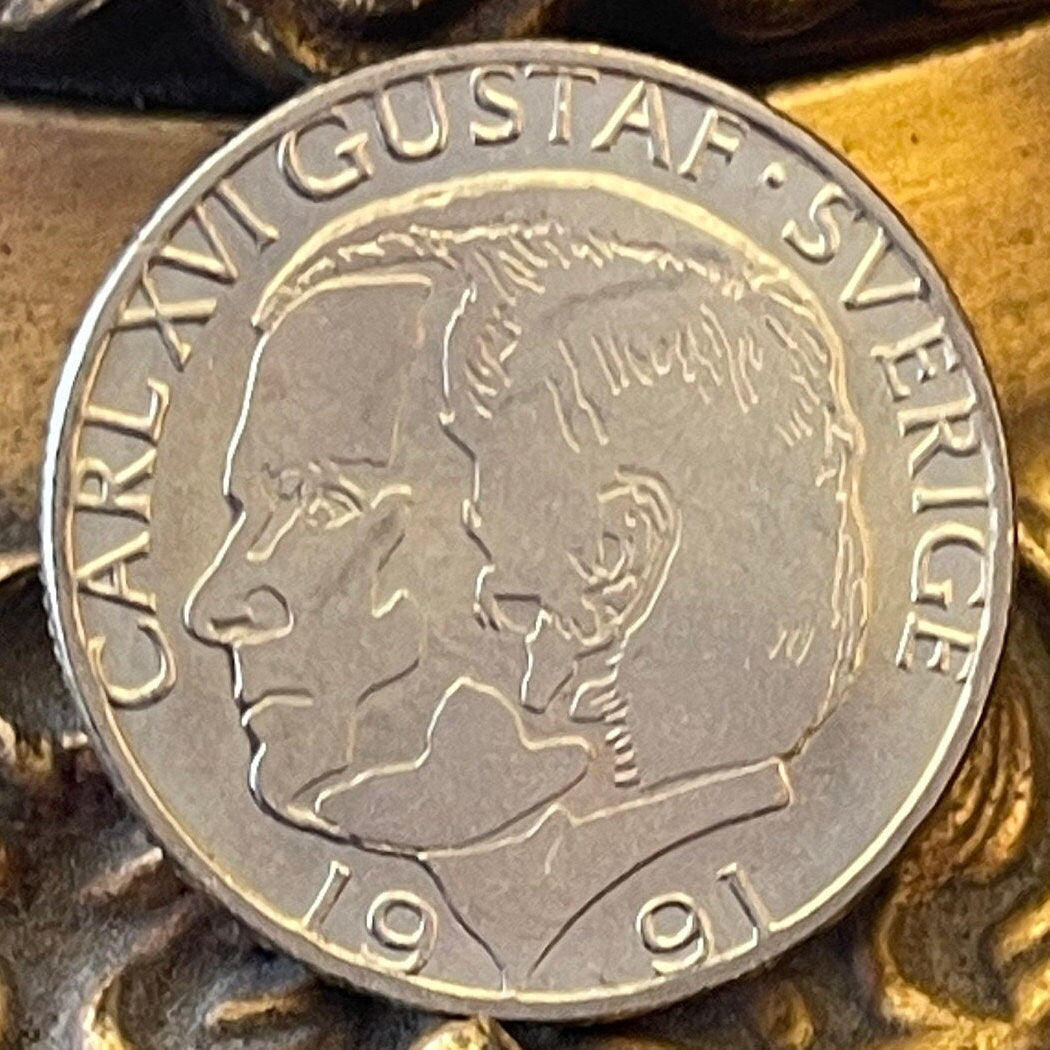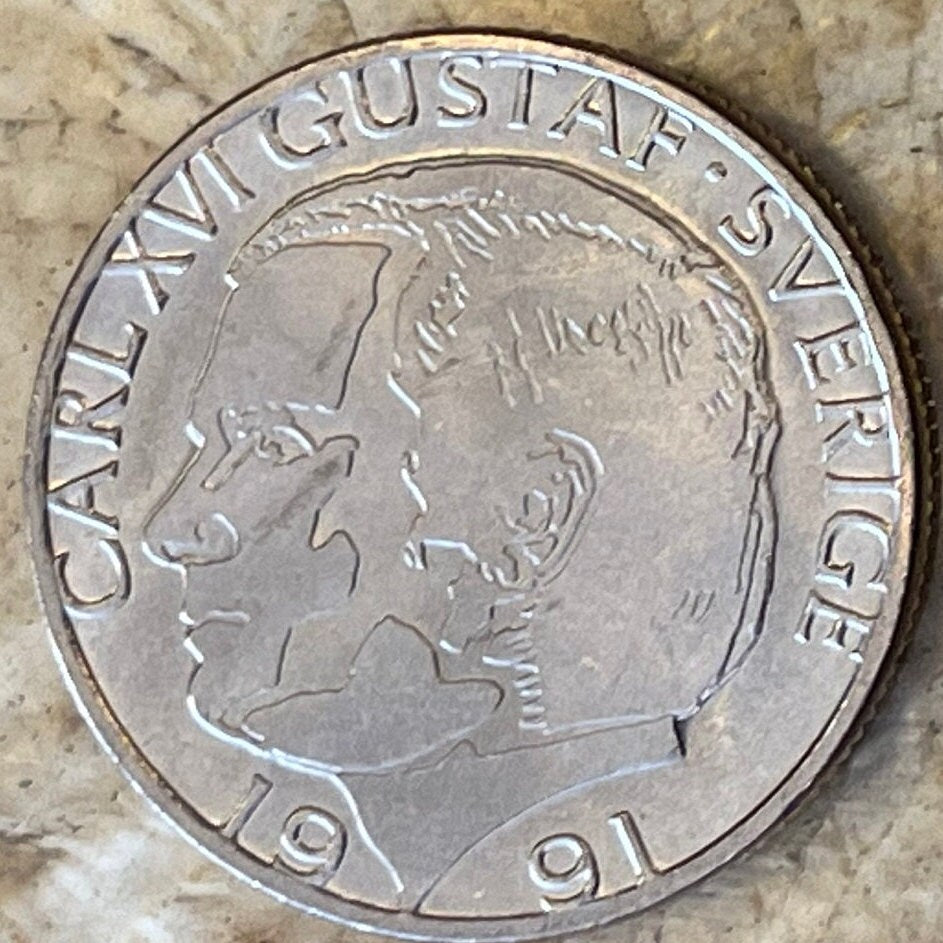elemintalshop
King Carl XVI Gustaf 1 Krona Sweden Authentic Coin Money for Jewelry and Craft Making (Three Crowns)
King Carl XVI Gustaf 1 Krona Sweden Authentic Coin Money for Jewelry and Craft Making (Three Crowns)
Couldn't load pickup availability
King Carl XVI Gustaf 1 Krona Sweden Authentic Coin Money for Jewelry and Craft Making
Obverse: Stylized portrait of King Carl XVI Gustaf facing left with his name, the country name, and the date.
Lettering: CARL XVI GUSTAF · SVERIGE
Translation: Carl XVI Gustaf · Sweden
Reverse: Crowned lesser coat-of-arms of Sweden: Three coronets, ordered two above one. Crowned with a royal crown. State motto in Swedish above; denomination below with mintmark at left and Riksbank governor's initial at right.
Lettering: FÖR SVERIGE I TIDEN
E 1 KR U
Translation: For Sweden - With the Times
Edge: Reeded
Features
Issuer Sweden
King Charles XVI Gustaf (1973-date)
Type Standard circulation coin
Years 1982-2000
Value 1 Krona (1 SEK)
Currency Krona (1873-date)
Composition Copper-nickel
Weight 7 g
Diameter 25 mm
Thickness 1.88 mm
Shape Round
Technique Milled
Orientation Medal alignment ↑↑
Demonetized 30 June 2017
Number N# 6862
References KM# 852a, Schön# 74a
Wikipedia:
Carl XVI Gustaf (Carl Gustaf Folke Hubertus; born 30 April 1946) is King of Sweden. He ascended the throne on the death of his grandfather, King Gustaf VI Adolf, on 15 September 1973.
He is the youngest child and only son of Prince Gustaf Adolf, Duke of Västerbotten, and Princess Sibylla of Saxe-Coburg and Gotha. His father died on 26 January 1947 in an airplane crash in Denmark when Carl Gustaf was nine months old. Upon his father's death, he became second in line to the throne, after his grandfather, the then Crown Prince Gustaf Adolf. Following the death of his great-grandfather, King Gustaf V in 1950, Gustaf Adolf ascended the throne and thus Carl Gustaf became Sweden's new crown prince and heir apparent to the throne at the age of four.
Shortly after he became king in 1973, the new 1974 Instrument of Government took effect, formally stripping Carl XVI Gustaf of his remaining executive power. As a result, he no longer performs many of the duties normally accorded to a head of state, such as the formal appointment of the prime minister, signing off on legislation, and being commander-in-chief of the nation's military. The new instrument explicitly limited the king to ceremonial functions and, among other things, to be regularly informed of affairs of state. As head of the House of Bernadotte Carl Gustaf has also been able to make a number of decisions about the titles and positions of its members.
The King's heir apparent, after passage on 1 January 1980 of a new law establishing absolute primogeniture (the first such law passed in Western European history), is Crown Princess Victoria, the eldest child of the King and his wife, Queen Silvia. Before the passage of that law, Crown Princess Victoria's younger brother, Prince Carl Philip, was briefly the heir apparent, as of his birth in May 1979. Carl XVI Gustaf is the longest-reigning monarch in Swedish history, having surpassed King Magnus IV's reign of 44 years and 222 days on 26 April 2018.
******
Wikipedia:
The lesser coat of arms is mainly used by the Government of Sweden and subordinate State authorities. As such it may be joined by insignias symbolising the activity of individual government agencies, following approval by the State Board of Heraldry. It is, for instance, embroidered on all Swedish police uniforms and in various coats of arms of the Swedish Armed Forces, and is displayed on Sweden's passports and embassies.
Blazon: "Azure, with three coronets Or, ordered two above one." Crowned with a royal crown. The shield may also be surrounded by the insignias of the Order of the Seraphim."
Share
